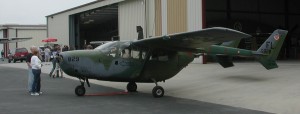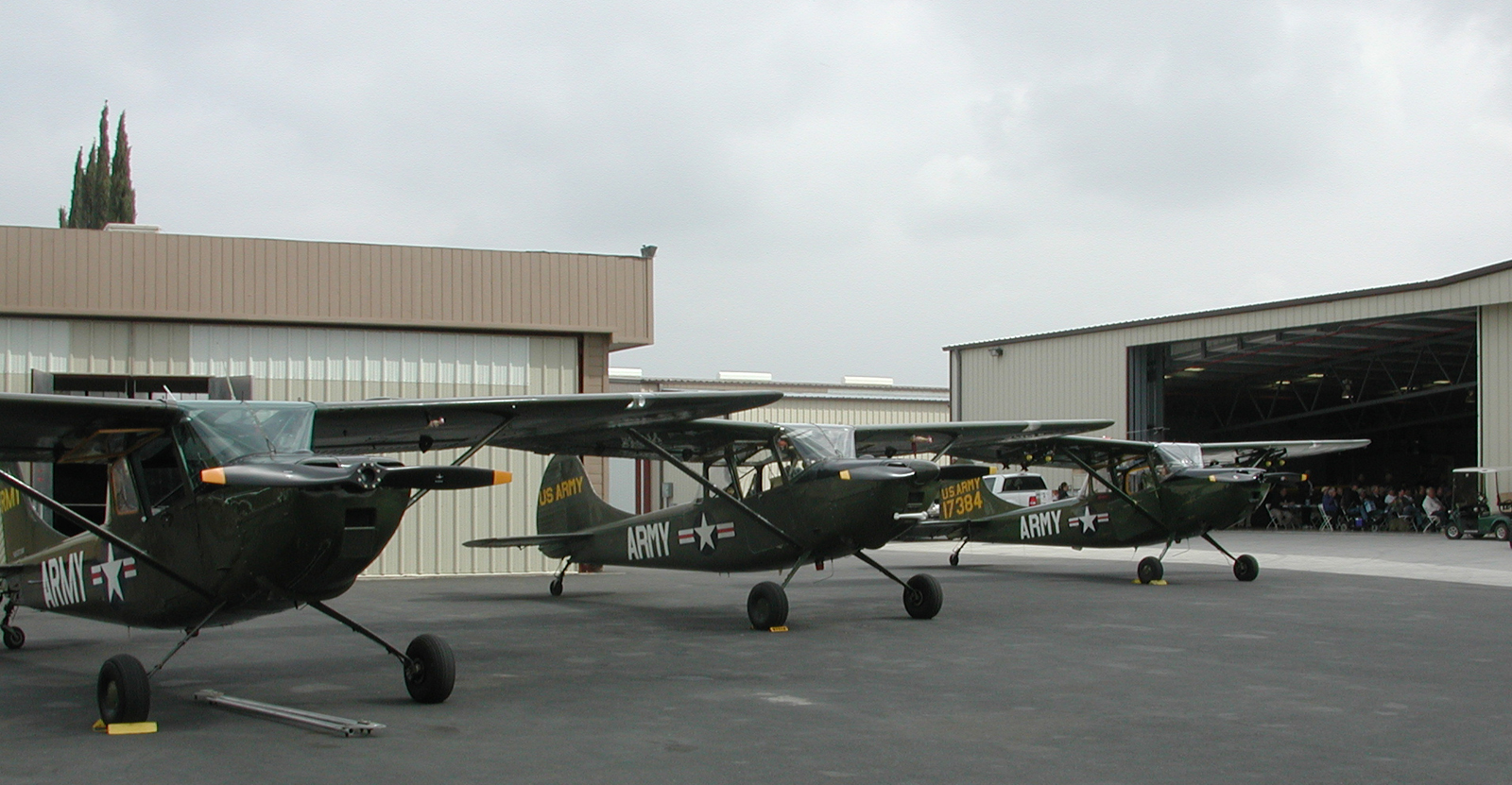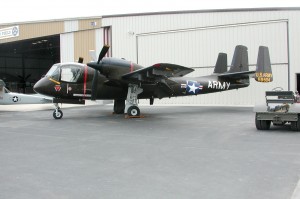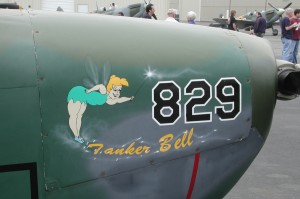
Three beautifully restored Cessna Bird Dogs flew in for the event. The L-19 in the center has some unusual equipment.
By Larry W. Bledsoe
The April event at the Planes of Fame Museum at Chino Airport in Southern California was billed as the “Air War Over Vietnam.” In spite of the low, cloudy overcast, on April 5, the parking lot soon overflowed, and the large crowd was greeted with a display of several Vietnam-era aircraft, plus an unexpected surprise.
Before the event started, the crowd milled around the ramp, checking out the aircraft on display. The featured aircraft for the day was a Grumman OV-1 Mohawk, which played a crucial surveillance role in Vietnam. Visitors were hoping to see it fly, but unfortunately, it was down for maintenance. Planes of Fame founder Ed Maloney later pointed out during the presentation that finding parts for this rare warbird is getting harder as time goes by.
Parked nearby was a Cessna O-2 Skymaster, in combat colors and configuration, looking like it had just flown in from the battlefield. It sported rather unusual nose art, titled “Tanker Bell.”
In addition to the two Vietnam era warbirds were four Cessna L-19 Bird Dogs: one in Air Force O-1 paint and three in Army L-19 paint schemes. Air Force forward air controllers used the L-19s to mark enemy targets for fighter-bombers. Because of the aircraft’s slow speed, it was an easy target for the enemy and was soon replaced by the O-2 Skymaster and later, the OV-10 Bronco.
Cessna built L-19 Bird Dogs from 1950 to 1962. The Army, Air Force and Marine Corps used them for artillery spotting, forward air control work, front-line communications, medical evacuation and pilot training. Of the more than 3,400 planes built, only a small number of them are airworthy today. They’re popular among warbird enthusiasts, because they’re fun to fly, don’t require a special type rating and have relatively low operating costs.

During the Vietnam War, forward air controllers used Cessna O-2 Skymasters for observation operations. The Skymasters replaced the L-19 Bird Dogs.
Another aircraft that provided yeoman service in the war was the Douglas Skyraider. While the event crowd gathered in a hangar, listening to speakers, two Skyraiders sneaked in under the low clouds, made a military formation approach to the field, broke midway down the runway and rolled out in the downwind leg for a landing—an impressive sight for any warbird lover.
Frank Mormillo, the event moderator, provided an in-depth, informative overview of the Vietnam Air War from 1954, including the U.S. involvement beginning in 1962, to the war’s last day on April 30, 1975. During that conflict, he said, the U.S. lost more than 8,500 aircraft. He also noted that on the last day of the war, the last U.S. plane to fight the North Vietnamese was a Skyraider.
Mormillo said many lessons were learned during that conflict that affected the designs of later fighter aircraft, such as the Air Force F-15 and F-16, Navy F-14 and the Marine Corps F-18.
It also changed military thinking of the late 1950s and early 1960s, which relied primarily on missiles for fighter aircraft armament. Air combat over Vietnam soon made it quite clear that the aircraft needed guns, as well as missiles. The A-10 Warthog was created in response to the needs of that war and the Army developed better gunships like the Cobra and later, the Apache helicopter.
Kevin Elridge, the museum’s resident historian, talked about the North Vietnamese air force. He explained that the North Vietnamese recognized the need for an air force to support their army in 1954. That year, North Vietnamese pilots started training in Yak 18s and other trainers built by Russia and China and graduated their first pilots in 1958.

One of the four L-19s flown in for the event has an Air Force O-1 paint scheme and has a simulated white phosphorus (“Willie Pete”) target-marking rocket mounted on a wing rack.
In 1963 the North Vietnamese pilots, who had trained in Russia and China, checked out in MiG 17s, each armed with 23mm guns and a 37mm cannon.
In 1964, the North Vietnamese shot down the first U.S. aircraft, a C-123 Provider, in a night intercept. It’s ironic that the North Vietnamese pilot was flying an American T-28. It seems a Laotian pilot defected to North Vietnam in the T-28, and the North Vietnamese then used the T-28 to attack the south.
Eldridge said American politics often put its own pilots in harm’s way. As an example, he said that U.S. pilots were required to fly the same routes repeatedly, which allowed the North Vietnamese to set up surface-to-air missile sites in those areas. Of the more than 4,000 American planes shot down by the North Vietnamese, only 150 to 180 were shot down in air-to-air combat; SAMs shot down the rest. In 1964, the first American pilot was taken prisoner after being shot down.
North Vietnamese MiGs, armed with guns, not missiles, turned out to be good dogfighting aircraft. They were more maneuverable and had faster acceleration than the early U.S. fighters sent to Vietnam. And in some cases, the planes were flown by Russian pilots, who were more experienced than the North Vietnamese pilots.

Moderator Frank Mormillo provided an informative overview of the air war over Vietnam, from 1954 to 1975.
By 1966, the North Vietnamese had approximately 30 MiG 21s, heavily armed, but with short range. Because the North Vietnamese used ground controlled intercept to guide their MiGs to U.S. aircraft, the short range wasn’t a problem; they were essentially operating over their own territory and didn’t have to waste precious fuel searching for American aircraft.
Besides listening to speakers, attendees also enjoyed an unexpected surprise; two Spitfires, a Hurricane and a Wildcat were on the ramp, being fueled in preparation for a flight to Texas as soon as the weather cleared. In addition, a polished P-51 Mustang made an appearance in front of a museum hangar, next to the Bird Dogs. The gathering of these rare birds made it a field day for photographers and warbird lovers alike.













